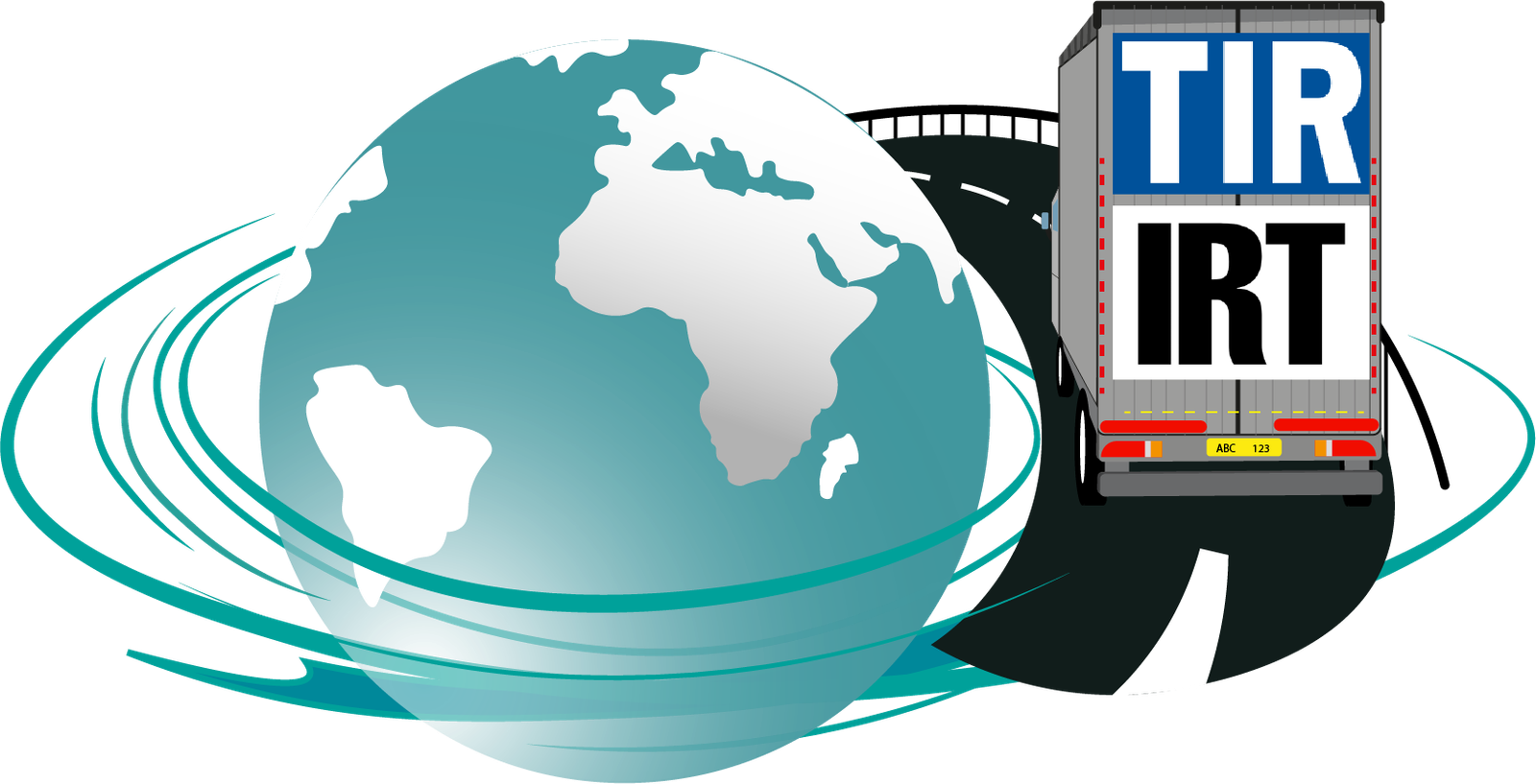With immense pleasure we say that International Road Transport (IRT) Chamber of Pakistan is an exclusive and innovative creation in Pakistan and IRT is unique Chamber of its kind in the entire Asia.
IRT is an advisory chamber, formed to represent its members for the provision of legal, commercial, technical and other, professional advisory, consultancy and support services to its members. IRT is an advisory chamber formed, to represent its member internationally, for the provision of legal, commercial, technical and other, professional advisory, consultancy and support services to its members.
IRT Members are Logistic Companies operating By Road Cross Border transportation in the regime of TIR, Carnet De-Passage and under United Nation’s ASYCUDA T-I, T-II Transit System.
The Road Transport is climate sensitive in respective of Noise, Emission etc. which causes Air & Climate Pollution. Preventing or mitigating the environmental pollution caused by Road Transport requires a multi-faceted approach involving individuals, businesses, governments, and communities.
IRT Chamber have Objectives to devise strategies and actions that can help prevent or reduce the negative impacts of Road Transport on the environment. Thus IRT Chamber and your climate conference are in hormone of objectives. IRT Chamber is also thinking for conducting seminars and conferences you have taken the initiative to awaken the society and government to start taking measure to make green environment.
Road transport can have several negative environmental impacts that contribute to pollution. These impacts arise from the operation of vehicles, the production and maintenance of road infrastructure, and the extraction and refinement of fuels.
IRT Chamber have identified some ways in which road transport pollutes the environment. The study is being shared with you for the awareness and to work jointly for the prevention.
1. Air Pollution:
Tailpipe Emissions:
Combustion engines in vehicles release pollutants such as carbon monoxide (CO), nitrogen oxides (NOx), volatile organic compounds (VOCs), and particulate matter (PM) into the atmosphere. These pollutants can lead to smog formation, respiratory problems, and contribute to global warming.
2. Greenhouse Gas Emissions:
Carbon Dioxide (CO2):
The burning of fossil fuels in vehicles is a major source of carbon dioxide emissions, which is the primary greenhouse gas responsible for climate change and global warming.
3. Noise Pollution:
Traffic Noise: The constant noise generated by road traffic can have adverse effects on human health and disrupt ecosystems, particularly in urban areas.
4. Habitat Fragmentation:
Roads can divide natural habitats, making it difficult for wildlife to migrate and find food and mates. This can lead to a decline in biodiversity and the isolation of animal populations.
5. Water Pollution:
Oil and Chemical Runoff: Rain can wash oil, heavy metals, and other chemicals from roads and vehicles into nearby water bodies, contaminating them and harming aquatic life.
8. Congestion and Idling:
Traffic congestion leads to vehicles idling in traffic, which wastes fuel and increases emissions per mile traveled.
9. Tire and Brake Wear:
The wear and tear of tires and brakes generate micro plastics and release metals into the environment, contributing to pollution.
10. Urban Heat Island Effect:
Roads and concrete in urban areas can absorb and radiate heat, contributing to the urban heat island effect, which can increase energy consumption and exacerbate local climate conditions Prevention.
Efforts to mitigate these environmental impacts include the development of cleaner and more fuel-efficient vehicles (e.g., electric and hybrid cars), improving public transportation systems, promoting carpooling and ridesharing, and investing in sustainable urban planning and transportation infrastructure. Additionally, transitioning to alternative fuels like biofuels or hydrogen can reduce some of the pollution associated with road transport.
To save the environment from the negative impacts of road transport, it is essential to take a comprehensive approach involving various strategies and actions. Here are the steps that can be taken to mitigate the environmental effects of road transport:
1. Promote Sustainable Transportation Options:
Encourage the use of public transportation, biking, walking, and carpooling to reduce the number of individual vehicles on the road.
2. Transition to Cleaner Vehicles:
Support the adoption of electric vehicles (EVs) or hybrid cars, which produce fewer emissions compared to traditional internal combustion engine vehicles. Incentivize the purchase of fuel-efficient and low-emission vehicles through tax credits and subsidies.
Incentivize the adoption of electric vehicles (EVs) and hybrid cars, which produce fewer emissions compared to traditional internal combustion engine vehicles.
3. Improve Fuel Efficiency:
Implement and enforce strict fuel efficiency standards for vehicles, which can significantly reduce greenhouse gas emissions.
4. Invest in Public Transportation:
Expand and enhance public transportation systems to make them more attractive and accessible to people.
5. Promote Active Transportation:
Develop pedestrian and cyclist-friendly infrastructure, such as bike lanes and pedestrian pathways, to encourage walking and biking.
6. Support Carpooling and Ridesharing:
Encourage carpooling and ridesharing through incentives, such as HOV (High Occupancy Vehicle) lanes and ride-sharing apps.
7. Implement Clean Vehicle Incentives:
Offer incentives for businesses and individuals to replace older, high-emission vehicles with cleaner alternatives.
8. Promote Telecommuting and Remote Work:
Encourage businesses to offer telecommuting options to reduce the need for daily commuting.
9. Improve Traffic Flow:
Optimize traffic signal timings and invest in intelligent transportation systems to reduce congestion and idling.
10. Support Sustainable Urban Planning:
Develop urban planning strategies that prioritize mixed land use, reduced sprawl, and public transit to minimize the need for long commutes.
11. Invest in Alternative Fuels:
Promote the use of alternative fuels like biofuels, hydrogen, and compressed natural gas, which can have lower emissions than conventional gasoline and diesel.
12. Maintain and Upgrade Infrastructure:
Ensure that roads are well-maintained to reduce fuel consumption and emissions caused by potholes and inefficient road surfaces.
13. Encourage Green Logistics:
Promote sustainable practices in the transport of goods, such as using electric delivery vehicles and optimizing supply chain routes.
14. Raise Awareness:
Educate the public about the environmental impacts of road transport and encourage eco-friendly driving habits.
15. Enforce Regulations:
Enforce emissions standards and other environmental regulations to ensure that vehicles meet specific pollution control requirements.
16. Research and Innovation:
Invest in research and development of new technologies and solutions to further reduce the environmental impact of road transport.
17. Promote Multimodal Transportation:
Encourage seamless transitions between different modes of transportation, such as buses, trains, and bicycles, to reduce the reliance on personal vehicles.
19. Incentivize Green Vehicle Purchases:
Provide tax incentives, rebates, and subsidies for the purchase of electric and other low-emission vehicles.
20. Collaboration and Policy Coordination:
Coordinate efforts among local, regional, and national governments, as well as with private sector stakeholders, to develop and implement effective policies and initiatives.
Saving the environment from the negative impacts of road transport is a complex task that requires the commitment and cooperation of individuals, communities, businesses, and governments. By implementing these steps and adopting sustainable practices, then it is possible to reduce the environmental footprint of road transportation and work towards a cleaner and more sustainable future



